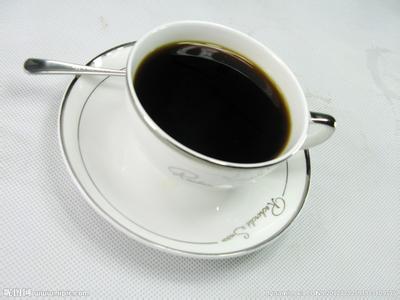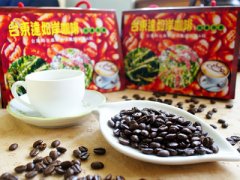Coffee producing countries introduce high-quality coffee beans

Bolivia
Coffee variety: Arabica coffee
Output: 150.000 bags
With snow-capped mountains, vast plateaus and tropical rain forests, Bolivia has ideal conditions for coffee production. More than 90 per cent of the coffee produced in Bolivia is produced in high-temperature and humid climates, with elevations of 500 to 1600 metres above sea level in the tropics of La Paz. Other important production areas are Cochabamba, Santa Cruz and Tariha provinces, where coffee is rich in fruit flavor.
Brazil
Type of coffee: Arabian, robastian coffee
Output: 35.000.000 bags
The mountains of south-central Brazil are covered with vast plantations of millions of trees. Brazil is extremely important to the commercial coffee industry and is a giant in every way. Although none of the coffee produced in Brazil is close to the best in the world, Brazil's coffee industry focuses on producing "low-cost" coffee: cheap, delicious, but hardly outstanding.
Bourbon Santos: also known as Santos, is the market name for a high-quality coffee from Brazil, usually shipped from the port of Santos and usually grown in the state of Sao Paulo or Minas Gerais. The word bourbon Santos is sometimes used to refer to any high-quality Santos coffee, but it is more appropriate to describe the bourbon variety of Arabica coffee, which produces a fruity flavor and has a more sour taste than other Brazilian varieties.
Leo. A type of Brazilian dry craft coffee characterized by medicinal flavor and iodine-like flavor caused by microbial invasion during the drying process. The word Leo is used to describe any coffee with a similar flavor. The flavor is regarded as a defect by North American buyers and pursued by buyers in the Balkans and Middle East countries.
Burundi
Type of coffee: Arabian, robastian coffee
Output: 500.000 bags
The tropical climate in Burundi is very beneficial to the growth of Arabica coffee. The mountains separate the two major rivers to form an ideal environment for growing Arabian light coffee. Grown nationwide from 1250 to 2000 meters above sea level, Burundian coffee is classified as a variety of East African quality light Arabica coffee. Special coffee is bought and sold on the market under the brand of Ngoma Drum.
Cameroon
Coffee type: Arabica coffee, Robasta coffee
Output: 1.000.000 bags
Rich volcanic soil, high altitude, moderate rainfall-all of which make Cameroon an ideal place to grow good coffee. Most Cameroonian coffee is grown by small landowners on plots of land ranging from 2 to 10 hectares, and almost all coffee is grown on compound crop farms. Cameroon coffee has a mellow, earthy, chocolate-flavored outline and a plump finish with hints of red berries.
Central African Republic
Coffee type: robastian coffee
Output: 100.000 bags
The Central African Republic produces only a small amount of top robastian coffee, which is mainly exported to France and Italy for steaming.
Espresso brewed under steam pressure.
Colombia
Coffee type: Arabica coffee
Output: 11.000.000 bags
The Andean system divides Colombia from north to south into three parts, northern, central and southern. The central and eastern Andes produce the best coffee. First-rate Colombian coffee is processed by small producers through a wet process and is collected, crushed and exported by the Colombian Coffee Alliance. These coffees are sold by grade (best and highest) rather than by market name or region, and they can range from excellent, first-class, mildly fruity Latin American coffee to ordinary, fermented fruity coffee. Coffee comes from some estates and cooperatives as well as from private crushing, which is then bought and sold according to region and plant subspecies (bourbon is the best). The most famous Colombian coffee is currently being produced in the southern Colombian state of Pasto. Mixed Medellin, Armenian and Manisales Colombian coffee is often bought and sold as MAMs.
Bogota: the market name for coffee in the area around the capital of Colombia.
Bucamanga: coffee named after the town is a kind of soft bean coffee with some of the characteristics of Sumatran coffee: high viscosity, low acidity and rich flavor.
Kukuta:. The market name for coffee production in northeastern Colombia, but is often shipped on Lake Maracaibo in Venezuela.
Super premium coffee: a grade of Colombian coffee, mixed with the best or highest, and the second best or excellent grade.
Extra coffee: the second best grade of Colombian coffee.
Narinho: the department that produces specific specialty coffee in southern Colombia.
Selected coffee: the highest grade of Colombian coffee.
Important Notice :
前街咖啡 FrontStreet Coffee has moved to new addredd:
FrontStreet Coffee Address: 315,Donghua East Road,GuangZhou
Tel:020 38364473
- Prev

Taitung coffee beans have a rich aroma and a mellow taste.
Taitung's agriculture has unique advantages in terms of climate and environment. It not only has a stable climate and less rain damage, but also has a good planting environment. Many well-known agricultural specialties, such as Golden Needle, Luoshenhua, and Sakya, have been bred ever since, and can be called a major agricultural county in Taiwan. In recent years, Taitung has also joined the ranks of coffee production, both on flat land and in high mountains, with environmental advantages and gradual progress.
- Next

Coffee producing country introduction Fine coffee beans 2
Costa Rican Coffee Type: Arabica Coffee Yield: 2.000.000 sachets The best Costa Rican coffees show a mellow and clean, intense acidity that makes them the most prestigious Central American coffee. Costa Rican coffee was originally grown in the countryside around the capital San Jose. The four most famous coffees are divided geographically into St. Marks, Sanshui River, Horedia and Arabica.
Related
- Guji coffee producing area of Guji, Ethiopia: Humbela, Shakiso, Wulaga
- What is the most expensive variety of Qiloso in BOP multi-variety group?
- How to store the coffee beans bought home?
- Why are Yemeni coffee beans so rare now?
- Ethiopian Sidamo all Red Fruit Sun Sun Santa Vini Coffee beans
- SOE is mostly sour? What does it mean? Is it a single bean? what's the difference between it and Italian blending?
- Is Italian coffee beans suitable for making hand-brewed coffee?
- How to choose coffee beans when making cold coffee? What kind of coffee beans are suitable for making cold coffee?
- Just entered the pit to make coffee, what kind of coffee beans should be chosen?
- Can only Japan buy real Blue Mountain Coffee? What are authentic Jamaican Blue Mountain coffee beans?

